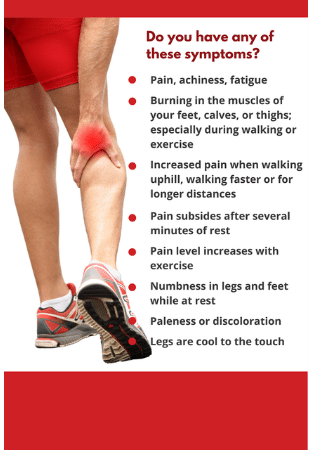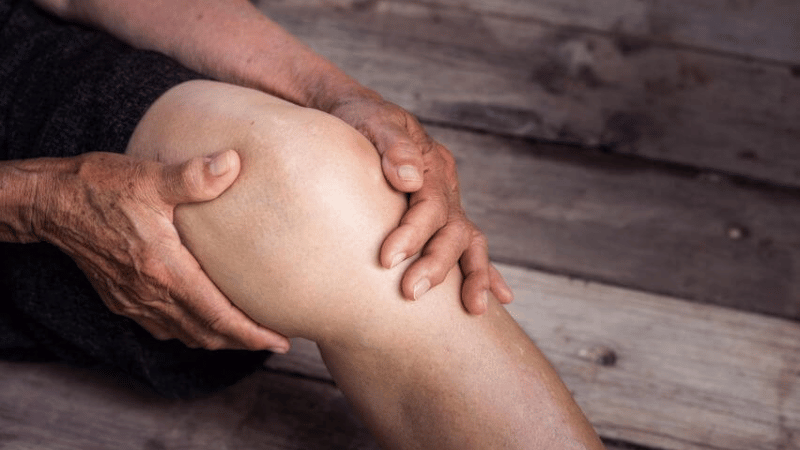Have you ever gone on a walk or jog around the neighborhood and noticed an uncomfortable prickling or tingling sensation in your legs? Did you know that, legs tingling after walking can signal a medical condition like peripheral artery disease (PAD)?
PAD occurs when plaque builds up in the arteries enough to restrict blood flow to the legs and feet. While it may feel like pins and needles, insufficient blood flow can cause life-altering symptoms, like leg numbness and restricted mobility.
At USA Vascular Centers, our compassionate vascular doctors are highly skilled in diagnosing and treating PAD. We offer non-invasive treatment to help alleviate symptoms and improve your quality of life. If you believe you have PAD, you’ll want to schedule a consultation appointment with a vascular doctor to find the best form of treatment for your condition.
What Causes Tingling in the Legs and Feet?
There are many reasons why your legs may tingle after exercise. Sometimes, the tingling sensation in the legs happens without any additional symptoms. In other instances, people may experience numbness in one leg while walking or experience mild discomfort in the legs and feet after a few simple exercises.
Let’s break down five reasons why you may be experiencing tingling legs after exercise.
1. Neuropathy
Neuropathy is damage or dysfunction to the nerves. The condition can cause pain, tingling, weakness, and numbness in the area near the affected nerves.¹ Diabetes is the most common reason for neuropathy, but infections, traumatic injuries, cancer treatments, and metabolic problems can also cause neuropathy.
2. Charley Horse
Charley horse is another name for a muscle spasm or involuntary muscle contraction.² These spasms can be painful and may result in sore, weak muscles in the legs. Dehydration and irritated nerves can contribute to muscle spasms. The same is true for low calcium or potassium levels, which can be a side effect of various medications, like steroids.
3. Overly Tight Shoes
If your shoes are too tight for your feet, you may experience your legs tingling after walking. This can result from your nerves getting compressed and is a sign that you need shoes that can accommodate your feet without pinching them.
Feet naturally swell throughout the day, so choose a pair of walking shoes with wiggle room on all sides of your feet. Look for shoes with space above your toes. The shoes should also be wide enough to fit your feet throughout the day. Walking shoes should also come with breathable, soft material on the top to help accommodate your feet as you exercise.³
4. Peripheral Artery Disease
PAD (Peripheral Artery Disease) restricts blood flow. It can cause a tingling sensation in the feet and legs. When you engage in an activity involving your leg muscles, the cells in those muscles require an increased oxygen supply.4
However, with impaired blood flow, leg muscles become oxygen-starved, leading to pain, numbness, and tingling.
If you think the tingling in your feet and legs could be a result of PAD, talk to a knowledgeable vascular doctor as soon as possible. You may have an advanced stage of PAD that requires treatment to help open the narrowed arteries, allowing blood to flow more freely to your legs and feet.
5. Electrolyte Imbalance
Electrolytes are essential minerals that produce an electric charge when broken down in bodily fluids, such as urine and blood.5
They help your muscles and nerves function correctly. When electrolytes are imbalanced, the body suffers. Exercising without drinking enough water is one potential reason for an electrolyte imbalance. Other conditions, such as cancer, liver disease, and cardiovascular disease, can also cause an electrolyte imbalance.
Symptoms of an electrolyte imbalance can include numbness and tingling in the feet, legs, and toes. Other symptoms to watch out for are muscle cramps, nausea, an increased heart rate, headaches, and confusion.5
How to Treat Tingling Legs After Walking
The first step in treating numbness, pain, and tingling in the legs after walking is to identify what is causing the symptoms. At USA Vascular Centers, our vascular specialists can expertly diagnose PAD. They can perform an ankle-brachial index test, which compares the blood pressure in your arm and ankle to determine if you have a blockage in your vascular system.
Depending on the severity of your condition, they may also recommend performing an angiogram procedure. During this procedure, a catheter is placed into the vascular system. Using contrast dye and X-ray imaging, a vascular doctor can determine the location of any blockages. If the doctor diagnoses you with PAD, several non-invasive treatment options are available, including:
- Angioplasty: The doctor inserts a balloon-tipped catheter into the vein and inflates the balloon at each blockage, compressing the plaque and opening the artery.
- Stent Placement: Depending on the severity of your condition, a vascular doctor might recommend a stent placement after an angioplasty. After the angioplasty, a mesh stent is inserted to replace the catheter and keep the artery propped open.
- Atherectomy: A laser or specialized blade is used to safely remove plaque from the body.
Treatment is crucial to your future well-being. If you’ve been diagnosed with PAD, a vascular doctor at one of our USA Vascular Centers will provide you with a personalized treatment plan.
How to Reduce Your Risk
It’s important to note that PAD is a progressive condition that can’t be reversed naturally. If you have not experienced tingling legs after exercise but want to start prioritizing your vascular health, you’ll want to:
- Keep tabs on cholesterol levels with lipid profile tests that your healthcare provider can schedule as part of your annual exams
- Monitor your blood pressure
- Commit to a well-rounded, healthy diet
- Prioritize sleep and exercise
If your legs tingle or you experience numbness in one leg after walking, we recommend scheduling a consultation with a vascular specialist immediately. A vascular doctor will provide you with a proper diagnosis.
Schedule a Consultation at USA Vascular Centers
Our team is here to help alleviate the symptoms associated with PAD and provide safe, effective care throughout your treatment journey. Schedule a consultation online or call us at 888.773.2193 today to get started.
Is it normal for your legs to feel tingly after a workout?
Extremely intense workouts may lead to a tingling sensation. However, feeling your legs tingle after walking, climbing stairs, or doing a low-impact activity may be a sign of an underlying condition.
Can over-exertion or overworked muscles cause tingling?
Yes, over-exertion and overworking your muscles can lead to dehydration. This imbalance in the body can cause a tingling sensation.
How do I stop my legs from tingling?
If your legs are tingling, take some time to relax and rest your legs. You may even find relief with a gentle or warm compress. If the tingling sensation continues every time you workout, schedule an appointment with a vascular specialist.
SOURCES CITED:
[1] “Peripheral Neuropathy.” Mayo Clinic, Mayo Foundation for Medical Education and Research, 02 September 2023. Accessed 5 March 2024.
[2] “Charley horse.” MedlinePlus, National Library of Medicine, 4 April 2023. Accessed 5 March 2024.
[3] “10 Points of Proper Shoe Fit.” FootCareMD, 2018. Accessed 5 March 2024.
[4] “Claudication: Causes, Symptoms and Treatment.” Cleveland Clinic, 18 October 2021. Accessed 6 September 2022
[5] “Electrolyte Imbalance: Types, Symptoms, Causes & Treatment.” Cleveland Clinic, 13 August 2022. Accessed 6 September 2022.



